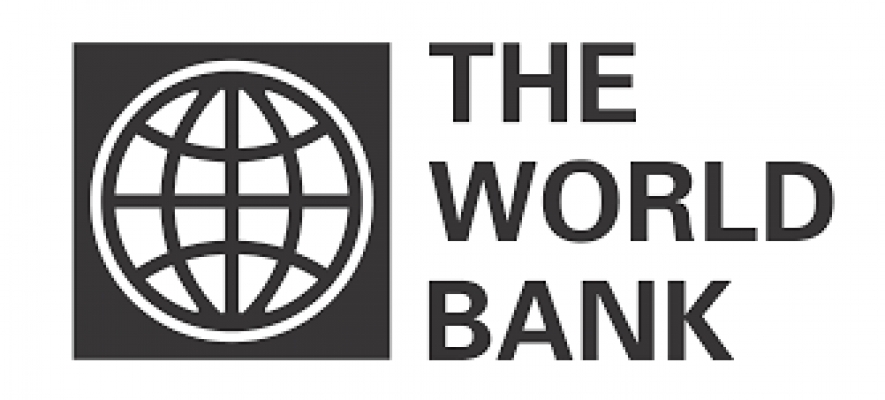The report further says that country’s national poverty headcount ratio declined from 15.3 percent in 2006/07 to 6.7 percent in 2012/13 although disparities remain. Unlike other South Asian countries, Sri Lanka is facing an aging population.
The WB also added that Sri Lanka’s economic performance remained broadly satisfactory in 2016 and early 2017 although recent floods and droughts adversely affected macroeconomic performance. Policy measures supporting fiscal consolidation and monetary tightening contributed to an improved outlook, against the backdrop of the $1.5 billion IMF-supported program agreed in 2016 to meet balance of payment needs.
The country has been relatively stable despite recent ministerial changes. The government is focusing on carrying out fiscal reforms, improving public financial management, increasing public and private investments, addressing infrastructure constraints, improving competitiveness, and addressing service delivery.
The World Bank Group is contributing to Sri Lanka’s transition to a more competitive, inclusive, and resilient upper-middle income country. Using a range of financing instruments, it supports reforms to promote macro-fiscal stability and competitiveness, inclusion and opportunities for all, as well as green growth opportunities, better environmental management and dealing with climate change.
COUNTRY CONTEXT
Sri Lanka is a lower middle-income country of 21.2 million people with per capita GDP in 2016 of $3,835. Since the civil war ended in 2009, the economy has grown on average at 6.2 percent a year, reflecting a peace dividend and a commitment to reconstruction and growth, but there have been signs of a slowdown in the last three years.
The economy is transitioning from being predominantly rural-based to urbanized economy-oriented around manufacturing and services. The government is carrying out fiscal reforms, improving public financial management, increasing public and private investments, addressing infrastructure constraints and improving competitiveness. It launched its Vision 2025 on September 4, 2017 to strengthen democracy and reconciliation, inclusive and equitable growth and ensure good governance.
Sri Lanka has made significant progress in human development. Social indicators rank among the highest in South Asia and compare favorably with those in middle-income countries. The national poverty headcount ratio declined from 15.3 percent in 2006/07 to 6.7 percent in 2012/13 although disparities remain. Unlike other South Asian countries, Sri Lanka is facing an aging population.
In 2016 Sri Lanka was hit with the worst drought in four decades that continued into 2017. In May 2017, Sri Lanka experienced one of the worst floods in 14 years, subsequently leading to a 4.3 fold higher than average number of dengue cases for the same period between 2010 and 2016.
RECENT ECONOMIC DEVELOPMENTS
Sri Lanka’s macroeconomic performance remained broadly satisfactory in the first half of 2017 despite natural disasters and challenges posed by a complex political environment. Year-on-year growth decelerated to 3.8 percent in the first quarter of 2017 following the 4.4 percent reported in 2016, driven mainly by weak performance of drought-hit agriculture and industry sectors.
The drought also likely contributed to higher poverty levels, through reduced agriculture income. More than 520,000 families were affected in 20 districts, obliging the government to implement relief programs. Because of low international commodity prices, inflation remained around the mid-single digit level despite supply disruptions and measures to increase government revenue.
On the external front, the benefit of low oil prices was offset by greater imports of food and petroleum due to the drought, while the impact on agricultural exports was eased by increased tea prices. Weak external liquidity was mitigated by the sale of sovereign bonds and by syndicated loans, as well as purchases by the monetary authority in the foreign exchange market.
Official reserves increased to a level equivalent to 4.0 months of merchandise imports by June 2017, after bottoming out in April at 3.0 months. However, the external current account deficit and continuously low FDI remain challenges to raising foreign exchange in a structured way.
Recent fiscal and monetary policy measures helped ensure a successful second review of the IMF- supported program in July 2017 and the disbursement of the third tranche of $167.2 million from the program. The revenue-led fiscal consolidation was strengthened with changes to the VAT Law and improved revenue administration. Parliament passed a new Inland Revenue Law to make the tax system more efficient and equitable, and generate resources for social programs. Monetary policy was further tightened to dampen continued monetary growth and support external sector stability.
ECONOMIC OUTLOOK
The economy is projected to grow by 4.6 percent in 2017 and marginally exceed 5.0 percent in the medium-term, driven by private consumption and investment. The government is committed to implement an ambitious medium-term reform agenda aimed at improving competitiveness, governance and public financial management that would achieve long-term benefits.
Continuation of reforms along with the IMF program will add to confidence while the government has shown its readiness to promote stability with appropriate monetary policy. These developments have contributed to an improved outlook.
External risks to the outlook include disappointing growth in key countries that generate foreign exchange inflows to Sri Lanka, steeper than expected global financial conditions and faster than expected rises in commodity prices. On the domestic front, the country is faced with possible delays in implementing reforms and the potential for natural disasters.



















